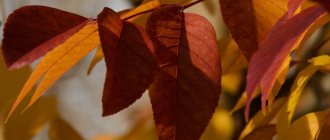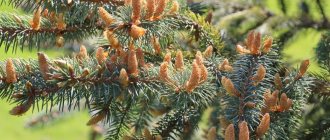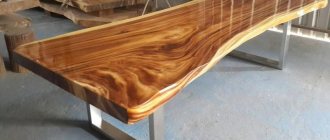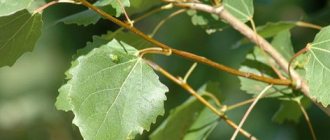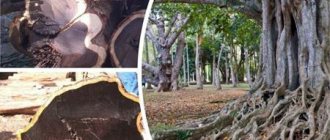We continue the series of articles in which we will talk about several forgotten or lesser-known plants that have beneficial properties. Today is a story about chestnuts, their medicinal properties and use for varicose veins.
In our area, horse chestnut or acorn plant, a plant of the Sapindaceae family, grows everywhere. The birthplace of chestnut is the Balkan Peninsula. The plant came to Russia in the 17th century. This is a magnificent tree up to 20 meters high. Its brown fruits are prized by herbalists, cosmetics and pharmaceutical industries.
How to distinguish inedible horse chestnut from edible one?
Attention! Edible chestnuts are the fruit of an entirely different tree called Castanea, from the Beech family (a tree twice the size of a horse, with cracked bark and 20cm long leaves, living up to 500 years).
The common horse chestnut (Aesculus hippocastanum) and horse chestnut (Aesculus carnea), which are commonly found in parks and other green areas, are in no way related to the tree species called chestnut (Castanea sativa).
How to distinguish species?
| Aesculus (Equine) | Castanea (edible) | |
| Leaves | Large, palm-shaped, opposite | Single, leathery, a bit like beech leaves but much larger and with distinct jagged edges |
| Inflorescences | Large, in the shape of pyramidal brushes | The flowers are whitish, collected in narrow spike-shaped inflorescences |
| Fetus | The fruits (nuts) are brown, the plume is spherical, very prickly, reminiscent of a beech fruit | The fruits are brown, enclosed in a tricuspid spiny capsule, with much fewer thorns |
Horse chestnut (inedible) is quite hardy and is often grown as an ornamental tree. Plants like places with fertile, moist soils and form dense crowns with hanging branches. The most important decoration of the trees is the magnificent inflorescences that bloom in May. The flowers of red chestnut and its varieties are especially decorative. They take on a pale pink or red color.
The edible Castanea species has little frost tolerance and can be grown in warm regions or sheltered areas. The species is resistant to drought and air pollution. Loves loamy and sandy soils. The trees form a wide, low crown. The tree is decoratively decorated with leathery leaves that develop in late spring, whitish inflorescences and large prickly fruits.
Kinds
The Plant List database
, the genus includes 23 valid species names:
- Aesculus × bushii CKSchneid.
- Aesculus chuniana Hu & WPFang
- Aesculus lantsangensis Hu & WPFang
- Aesculus × marylandica Booth ex Dippel
- Aesculus megaphylla Hu & WPFang
- Aesculus × mutabilis (Spach) Scheele
- Aesculus parryi A.Gray
- Aesculus polyneura Hu & WPFang
- Aesculus tsiangii Hu & WPFang
- Aesculus wangii Hu
On The Plant List
These types have an uncertain (Unresolved) status:
| From left to right, inflorescences of horse chestnuts: yellow, California, red, small-flowered, smooth, meat-red |
Beneficial features
As we found out, the fruits of our popular tree are inedible. What are the benefits of horse chestnuts (inedible)?
Almost every part of this tree contains extremely valuable substances with a strong effect. Flowers, bark, unripe fruits, seeds, leaves contain:
- triterpene saponins, of which the most important is escin;
- flavonoids;
- coumarins;
- tannins;
- phenolic acids.
The fruits contain:
- a lot of starch;
- Sahara;
- proteins;
- fats;
- sucrose;
- malic, citric acid;
- lecithin;
- a significant amount of vitamins B, K.
To strengthen blood vessels, prevent varicose veins
Chestnut seed extract has a number of beneficial properties:
- anti-inflammatory;
- decongestant.
The extract inhibits the breakdown of hyaluronic acid, increasing the elasticity of blood vessels, reducing their permeability, and improving lymph-venous circulation. Therefore, these brown fruits are an excellent ally in the fight against:
- various types of varicose veins (including hemorrhoids);
- swelling;
- ulcers of vascular origin.
The extract is used externally to support blood vessels.
To combat cellulite
This valuable fruit is also used to combat cellulite. Plant extract preparations used for rubbing improve blood circulation in the subcutaneous tissue, facilitating the removal of toxins from the skin and eliminating characteristic swelling.
Treatment of hematomas and frostbite
Due to their antibacterial properties, improving blood circulation and mild astringent properties, chestnuts are useful in the treatment of frostbite, burns and other skin injuries, bruises or tendonitis (inflammation of the tendons).
The most useful compresses are made from infusions or decoctions of bark, flowers, leaves; they have the following beneficial effects:
- improve blood circulation in the skin;
- accelerate the resorption of hematomas;
- reduce swelling.
Indications for use
Considering the beneficial properties of horse chestnut, medicines based on it are used for the following diseases and conditions:
- Varicose veins The disease provokes abnormal changes in the veins, which leads to the appearance of nodes. The pathology most often affects the lower extremities, but the gastrointestinal tract and testes are also susceptible to it. The composition of horse chestnut helps thin the blood, prevents the formation of blood clots, and strengthens the walls of blood vessels and veins.
- Diseases of the ENT organs and respiratory system. For sinusitis, the procedure of rinsing the nose is effective. The decoction has a pronounced antiseptic property, making it also recommended for gargling and mouthwash. Horse chestnut eliminates cough and makes breathing easier during influenza and ARVI.
- Diseases of the gastrointestinal tract. Thanks to its unique composition, horse chestnut restores the functioning of the digestive system and relieves inflammation. Decoctions are effective for problems with the spleen, liver, pancreas, as well as for gastritis with a high level of acidity.
- Dysfunctions of the cardiovascular system. Horse chestnut is included in medications intended to combat atherosclerosis, high blood pressure, cholesterol, thrombophlebitis, and cardiac disorders.
- Sore muscles and joints. In this case, dosage forms for external use are used. Infusions and tinctures are rubbed into problem areas for arthritis and rheumatism.
- Women's problems. The plant improves blood clotting and stops bleeding. For inflammation in the intimate area, chestnut baths are recommended.
- Male diseases. Decoctions and medicines based on horse chestnut help with inflammation in the prostate gland, as well as with varicocele.
Tincture recipe
Horse chestnut tincture with vodka is easy to prepare.
- Fill a dozen ripe fruits with a glass of boiled, cool water.
- Add half a liter of alcohol.
- Let it steep in a closed bottle for a month, shaking occasionally.
- After this time, filter the tincture.
Store chestnut tincture in the refrigerator.
Properties of the tincture:
- improves blood flow;
- prevents swelling and varicose veins.
The tincture is also used for wiping in case of muscle and joint pain.
Chestnut diseases
In order for the chestnut to please the eye, it is necessary to regularly carry out preventive measures to protect it from diseases and pests. This plant is quite resistant to various diseases, however, they are not excluded.
Main diseases of chestnut:
- Leaf spotting can be holey, black, red-brown, or brown. It is necessary to carefully select damaged leaves and burn them. The tree needs to be given additional fertilizing, reduce the amount of watering, or make a small shelter using a few pegs and film.
- Powdery mildew occurs due to hot weather or an excess of nitrogen fertilizers, a lack of phosphorus and potassium additives. In the evening, the tree can be watered with fungicides: Topsin, Bayleton, Fundazol, Fitosporin-m.
- Necrosis is caused by a sharp increase or decrease in temperature, mechanical damage. An adult plant will calmly survive such a nuisance, but a young plant may die. To avoid this, the damaged area is cut out, the remaining bark is watered with a disinfectant and garden varnish. To avoid necrosis, it is necessary to thoroughly whiten the tree in spring and autumn.
- If rot has occurred on the bark, the chestnut cannot be saved. It is cut down and burned. Liming the soil and treating it with fungicides will help prevent this unpleasant disease.
Nuances of care:
- Watering is needed regularly, but not excessively. In the first three to four years, further growth depends on this, but then this criterion is not so important, because thanks to the voluminous root system, the chestnut finds moisture on its own.
- Feeding is carried out once a year in early spring. To do this, you can prepare a nutrient mixture consisting of 15 liters of water, a kilogram of fresh manure, 25 grams of phosphorus-potassium fertilizers and 20 grams of ammonium nitrate and urea. Add the resulting mixture little by little to the mulched root zone so as not to burn the roots.
- As a uniform application of fertilizers, mulching of the root area with humus and rotted manure is used.
- Formative pruning is carried out in the spring, with young shoots shortened by about a quarter of their length. Despite the fact that the chestnut crown is lush, it also needs to be thinned out to prevent it from becoming too thick. In this case, there is a high probability of infection by fungal diseases, as well as loss of an attractive appearance.
- Young shoots need winter shelter. To do this, three to four pegs are driven around the tree, on which a tarpaulin or other durable fabric is wrapped. It is not advisable to use plastic film, as this can lead to rotting of the shoots and the development of fungal diseases.
Planting and growing chestnut at home is not difficult, because it is a very hardy and resilient tree. Ready-made seedlings or self-collected planting material are suitable for this. The main nuances of planting, as well as the rules for further care, are covered in the information in our article.
Some amazing ideas
In addition to traditional medicine, the fruits of this tree are used for other purposes - in gardening, cosmetology, and household use.
From aphids
Every gardener knows how much aphids threaten plants. It’s very easy to get rid of it, just prepare a decoction of chestnuts:
- The fruits are boiled covered (in a saucepan that is not used for cooking!) for 15 minutes.
- After this time, the fruits are thrown away.
- The resulting liquid is cooled and poured into spray bottles.
The decoction is sprayed on plants attacked by pests.
Watering flowers
Chestnut broth is sometimes worth adding to the water that is used to water flowers. Plants watered with the decoction will grow beautiful and healthy.
Spider Repeller
It turns out that the smell of chestnuts repels spiders. If their presence in the house irritates you, place chestnuts on the windowsills, in all corners between the walls. This effective method for repelling arachnids will become a beautiful autumn decor for your apartment.
For washing
Ecological cleaning nuts are very popular among supporters of living in harmony with nature. However, few people know that chestnuts can be used in this way. You just need to prepare them correctly:
- The collected fruits are peeled from the brown shell and cut into quarters.
- The fruits are placed in a linen or cotton bag or sock.
- The bags are placed together with dirty clothes in the drum of the washing machine.
- Select a standard wash program without adding powder or fabric softener.
Soap
You can make soap from chestnuts:
- Remove brown shells from 20 chestnuts;
- grate the peeled fruits on a grater (one that is no longer used in cooking!);
- transfer the resulting pulp into a saucepan, add water and cook for 15 minutes;
- cool and squeeze through a clean cloth or gauze;
- form any shape from the dried mass;
- leave the soap to dry in a dry place;
- After a few hours the soap is ready for use.
Mask for the face
A mask of chopped chestnuts and 1 tablespoon of coconut oil can work wonders. The product makes facial skin smooth, elastic, well moisturized.
Chestnut water for hair
Chestnuts are very useful for hair and scalp care. Chestnut water (formed after boiling the fruit) is regularly rubbed into the scalp. The decoction strengthens the hair follicles, preventing hair loss.
Edible species
It will be useful for every person to know which chestnuts can be eaten. There are several types suitable for food:
- Gorodchaty (Japanese).
The largest-fruited variety. Grows up to 15 meters. Nuts up to 6 cm in diameter and up to 80 g. in bulk. - Sowing.
Reaches 35 meters. Prefers a humid and warm subtropical climate. Propagated by seeds. It is distinguished by a powerful root system that holds the crown well. - American (toothed).
Frost-resistant variety, easily tolerates long-term cold temperatures down to -30⁰C. - Chinese (softest).
The fruits have excellent taste and are widely consumed. Wood is in demand in industrial production. The plant is afraid of drought and requires frequent watering. - Short.
Tree up to 15 meters high. Refers to decorative forms. - Australian.
An evergreen tree reaching a height of 15-30 meters. - Segyu.
Resistant to pathogenic fungi that attack chestnuts. - Henry.
Distributed in western and central regions of China. Reaches a height of 25-30 meters.
The maximum amount of nutrients is concentrated in the fruits of edible chestnuts at the time of ripening. Once the chestnuts are completely brown, they are harvested and stored for the winter. They are eaten in cooked and raw form.
| Adobe Acrobat document (271 kb) |
Heat-treated nuts taste like boiled beans. They have high energy and nutritional value, as well as a unique composition. Their oil content is much less than other nuts.
The calorie content of roasted chestnuts is 182 kcal per 100 grams. Boiled nuts contain 131 kcal, raw nuts - 166 kcal, and steamed ones - 56 kcal. Chestnut dishes are served as a side dish, main meal or snack. There are many recipes, all of them are quite simple and affordable.
Reference!
Regular consumption of edible chestnuts will saturate the body with essential substances, fiber and vitamins. But it should be remembered that noble nuts can bring a person not only benefits, but also harm if consumed without measure. During the day you are allowed to consume no more than 40 grams. product.
How to select and save?
Buy from the market or supermarket during the autumn months when the harvest is ripe. Choose large specimens with rich color without spots or other defects. Normal size is 3 cm. The product spoils quickly. It is better to prepare it and eat it within 2 days after purchase. In extreme cases, you can freeze it.
Chestnut is a delicious delicacy, rich in nutritional components. It will satisfy hunger for a long time, bring joy to taste and enrich the diet with biologically active substances. The season is about to begin, seize the moment, please yourself and your loved ones, try something new. What if you like it too?
More about plant personality
Just by the foliage alone and how the flowering progresses, you can understand the trees with which fruits are in front of you - horse or noble. If we talk about leaves, then in edible ones they stand out very much, because each individual leaf grows evenly one after another, while in the opposite species the leaves, figuratively speaking, grow in fives.
You will also be interested in What plants give to animals and humans - how to use them
Appearances are deceptive
Just like flowering. Completely different. The beauty of horse chestnut blossoms is simply impossible not to notice, and in late spring, in addition to the beautiful flowers, you can enjoy a wonderful aroma. And a flowering tree, the fruits of which can be safely eaten, remains annoyingly unnoticed due to its discreetness and simplicity. Such trees bloom for several weeks.
"Giants" and "dwarfs"
Plants with inedible fruits are usually shorter than varieties that produce edible ones. Wild chestnut does not exceed 15 meters, with the exception of individual specimens that reach 25 meters. There are also shrubs, the height of which ranges from one and a half to 3 meters. Others, classified as noble, grow very tall, reaching 35 meters.
Fighting the shell
The main difference is the size of the core. Edible ones will be smaller than horse ones. Their spines are also different. In edible ones, they are few in number and can be easily removed. Edible ones have a lot of them. And in order to remove the peel, you will have to tinker quite a bit - it’s not that easy.
What's inside?
Green boxes hide chestnut fruits. In a box with inedible nuts there is only one seed, in isolated cases two, which taste bitter. With edible ones - from 3 to 7 pieces, pleasantly sweet.
All these different varieties are united by the similarity of the fruits, which is misleading. At first glance, the seeds seem exactly the same: smooth surfaces with a light spot and an even brown color. But in reality it turns out not to be so.
Where are you firmly established?
Horse chestnut grows well in Russia, Crimea, Belarus, Japan, India, America, and Europe.
Edible chestnut mainly grows in the Caucasus, southern Russia, Asia, Italy, Spain, France, and many other European countries with warm climates.
Harvesting
Fruits suitable for consumption ripen in September until November. In their fresh original form, they are poorly stored and very quickly become moldy, so they are quickly processed: dried or canned.
They begin to bear fruit only after 15 years, but every year and with a bountiful harvest. Within two weeks, they fall off the trees in their skins on their own. Or, if necessary, they are helped by knocking down with long poles, having previously cleared the area under the trees of branches and leaves.
One hectare allows you to collect up to 400 kilograms of nuts. This is in natural conditions, because in artificial conditions it grows on a tree only up to 50 kg.r.
Contraindications and harm of chestnut
One of the main properties of the medicinal plant is the ability to quickly and very effectively thin the blood, as well as increase weight due to the high content of starch and sugars, therefore the main contraindications are:
- tendency to corpulence;
- thrombocytopenia;
- any blood clotting disorders;
- dysfunctions of the gastric and intestinal tract;
- hidden bleeding;
- diabetes.
Traditional medicine recipes with horse chestnut
Fresh juice from flowers
Collect fresh flowers, grind them in a blender and squeeze out the juice through a couple of layers of gauze. Take 25-30 drops, diluted in 1 tbsp. water, 2 times a day. within 3-4 weeks. Recommended for varicose veins of the lower extremities and inflammation of hemorrhoids. Externally used to lubricate joints with gout.
This remedy is considered the most effective for non-advanced varicose veins and helps to almost completely get rid of symptoms after just 1 month.
Horse chestnut extract (extract)
The extract is rich in escin and other saponins, which eliminate venous congestion, inflammation of the veins and protect capillaries from damage. Helps normalize blood pressure and is used in the treatment of thrombophlebitis, hypertension, and atherosclerosis. It is difficult to obtain the extract at home.
Ointment
Take 5 fruits or 5 tbsp. dried flowers, chop, pour in 500 ml of vegetable oil, place in a water bath (about 1 hour), cool and strain. Apply to areas with inflamed vessels and repeat the procedure 2-3 times a day.
Ointment for varicose veins
Take 5 tbsp. l. dried chestnut flowers and 2 tbsp. l. medicinal sage, add 4 tbsp. l. pharmaceutical chamomile and 1 tbsp. potato starch. Add 200 gr. chicken fat and heat the mixture in a water bath for 3 hours, leave for another 12 hours and boil again. Afterwards, the mixture must be strained and periodically lubricated on the affected areas of the lower extremities.
Alcohol tincture of dried flowers/fruits
You can use a pharmacy tincture or prepare it: 10 g. Grind the flowers or chestnut fruits, peeled and pour 100 ml of vodka, place in a dark place to infuse for 1 week, shake periodically and finally filter. Take 15-30 drops 3 per day.
Used to treat thrombosis, hemorrhoids, varicose veins, prostatitis. Helps with radiculitis, gout, rheumatic and arthritic pain (rubbed externally).
Alcohol tincture from horse chestnut fruits
Cut the fruits into 4 parts, fill a glass container with them, fill to the top with vodka and close with a lid. Leave for 3 weeks in the dark. Moisten a clean cotton cloth with this tincture and apply as a compress for arthrosis, arthritis and rheumatism.
Water infusion
Take 1 tsp. crushed chestnut bark, pour 2 cups of boiled chilled water, leave the mixture for 8 hours, strain and take 2 tbsp. four times a day. for diseases of the gallbladder, kidneys, intestines and inflammation of the respiratory tract.
Decoction
Take 5 g. flowers and the same amount of bark, chop, place in an enamel bowl and pour 200 ml of boiling water. Boil over low heat for half an hour and strain through 3 layers of gauze. Bring the volume to the original volume with water, drink 1 tbsp. 1 time per day in the first 2 days, in subsequent days - 2 tbsp. at the reception and further - 3 tbsp. appointment.
For inflammation of the veins of the extremities, take up to 8 weeks, for hemorrhoids – 1-4 weeks. Also helps with anemia, shortness of breath, rheumatism. Recommended for diseases of the gallbladder, spleen, liver, anemia, edema, pulmonary tuberculosis and bronchitis. Helps improve digestion and eliminate inflammatory processes in the gastrointestinal tract; it is also recommended for uterine bleeding. Used in gynecology for douching for leucorrhoea and in urology to relieve inflammation of the prostate.
Chestnut kvass
Take 25 fruits, cut them into 2 halves, put them in a gauze bag and place a small stone there. Place the bag in a 3-5 liter jar and pour 2.5 liters of chilled boiled water into it. Add 1 cup sugar, 1 cup whey. It is important that the gauze bag is at the bottom of the jar. Cover the top with a triple layer of gauze and place in a dark, warm place to ferment. After 2 weeks, the kvass is considered ready - it needs to be strained and filtered. You can take it 2 glasses for 1 month.
There is no need to throw away the chestnuts - fill them with water again, add 1 glass of sugar and 3 liters of water. This kvass will be ready in 1-2 days.
The drink effectively quenches thirst, helps the body cleanse itself of radionuclides and heavy metals, helps restore the epithelium of the mucous membrane of the stomach and intestines, and is a source of useful substances that improve health.
Decoction for menopause (for external use)
Take 15 g. peel from ripe fruits and add 1 glass of water, boil this mixture for a quarter of an hour and leave for another 1.5 hours. Use this decoction for washing, morning and evening: this will help eliminate itching and dryness.
Decoction for hemorrhoids
Take 5 grams. bark and flowers of the plant, pour 250 ml of boiling water over them and simmer the preparation for about half an hour over low heat. After the preparation has cooled, it must be filtered and topped up with boiled water to the original volume. Drink 1 tbsp. twice a day for 1 week.
Infusion to fight prostatitis
Dried chestnut fruits and flowers, well crushed (1 part), mixed with 10 parts of vodka, placed in a liter jar, closed with a lid and put the container in a cool, dark place for a month. Take 4 times a day. 15 drops each. The duration of the course is set individually.
An effective infusion for blood pathologies and brain tumors
Take 1 tbsp. Dried flowers pour 1 glass of water, bring to a boil and immediately remove from heat. You cannot boil the composition! Leave the drug to infuse for 6 hours, strain and refrigerate. Take ¼ cup several times a day, maximum 1 liter per day. Take 3 weeks, then 2 weeks off and again the course.
Infusion for the treatment of joints and myositis
Take 40 gr. dried flowers, add 1 liter of pure medical alcohol, leave for 7 days and strain. Rub this infusion into joints and muscles if pain occurs.
Gout remedy
Dry, finely chopped flowers weighing 50 g. pour 800 ml of alcohol, leave for 10 days in the dark. Filter, moisten gauze folded in three layers and apply to the affected joint.
Decoction for radiation sickness
Finely chop chestnut flowers, take 20 g. raw materials and pour 300 ml of water, boil and put in a warm place for 10 hours. Filter and drink 100 ml three times a day.
Anti cellulite oil
Take 1 glass of olive oil, add 100 g. chopped horse chestnut and the same amount of chopped basil. Infuse the product for at least 10 days, strain, add a few drops of grapefruit essential oil and use the oil for anti-cellulite massage (manual, hardware).
Face and body scrub
Grind young chestnut fruits to a homogeneous fine mass, add a little honey or rich sour cream and use as a natural scrub that perfectly cleanses and revitalizes the skin of the face and body. This product should be used very carefully, without vigorous rubbing, so as not to cause skin irritation.
Treatment of radiculitis
Take lard, add chopped chestnuts in a 1:1 ratio, mix. Apply the composition to a cabbage leaf, apply to the sore areas of the back, tying a woolen scarf over it. It is especially recommended to carry out this treatment at night.
Horse chestnut with leeches
Plant preparations are often prescribed in parallel with hirudotherapy: enzymes secreted by leeches into the patient’s blood thin the blood and help eliminate venous stagnation.
